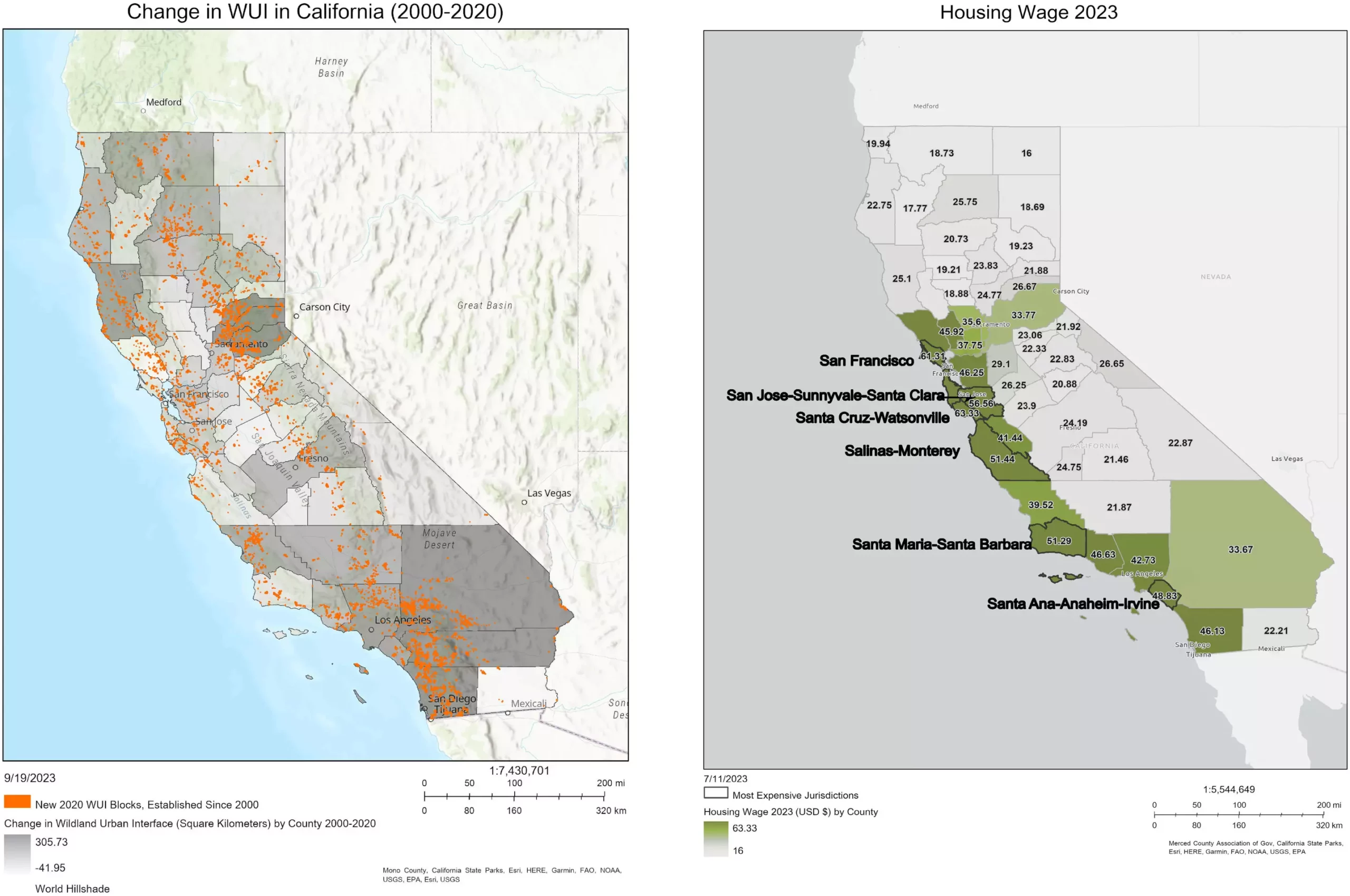In a pivotal study published in the journal *Proceedings of the National Academy of Sciences*, researchers from UC Santa Cruz are setting the stage for an in-depth exploration into the correlation between California’s affordable housing crisis and the burgeoning Wildland-Urban Interface (WUI) development. With the rapid conversion of natural landscapes into residential areas, more than one-third of California’s households now sit adjacent to wildlands, exposing them to heightened risks of climate-related calamities such as wildfires, floods, and landslides. As these trends escalate, it becomes imperative to critically assess the interdependencies that exist between urban housing challenges and environmental consequences.
Since the 1990s, California has led the nation in WUI growth, rendering it a unique laboratory for analyzing these phenomena. WUI areas, typically characterized by their proximity to nature, not only increase fire risks but also disrupt wildlife habitats and contribute to longer commutes, exacerbating greenhouse gas emissions. Despite widespread acknowledgment of the threat posed by WUI proliferation, the underlying drivers of such development remain poorly understood. Lead author Miriam Greenberg emphasizes the importance of integrating social science methodologies with environmental studies to achieve a holistic understanding of these intertwined issues.
The Housing Crisis as a Driving Force
One of the significant contributions of UC Santa Cruz’s research is its exploration of the motivations behind WUI habitation. Historically, individuals may have chosen to inhabit WUI regions due to familial or generational ties or a yearning for closer communion with nature. However, the current research posits that affordability has increasingly become a driving factor propelling Californians to migrate towards these areas. As urban housing costs continue to surge, many residents find themselves relegated to the outlying edges of metropolitan regions where housing is relatively cheaper, even if it entails higher risks from climate threats.
This migration pattern raises pressing questions about the demographic landscape of WUI areas. Researchers predict a stark demographic dichotomy: while middle-class workers might dominate more accessible WUI developments near urban centers, more remote areas could present a convoluted mix of socioeconomic strata—from affluent estates to makeshift homes for lower-income populations. As indicated in the article, this shift towards affordability-driven migration exacerbates socio-economic disparities within WUI regions, ultimately amplifying the impact of climate-induced disasters on vulnerable populations.
The researchers highlight that environmental risks associated with WUI living are omnipresent, yet not all residents are equally equipped to confront these dangers. Differing levels of wealth, resources, and local knowledge result in divergent capacities to prepare for and recover from disasters. Lower-income residents, often compelled to relocate to WUI areas for affordability, face disproportionately adverse outcomes when climate disasters strike. They may lack the financial reserves, time, or expertise necessary to implement effective disaster preparedness strategies, rendering them even more susceptible to the adverse effects of climate change.
By unpacking these layers of inequality, the authors suggest that it is crucial to recognize the affordable housing crisis as not merely a social injustice but an environmental sustainability challenge. Inadequate access to affordable urban housing forces vulnerable populations into high-risk areas, creating a cycle of environmental injustice compounded by economic hardship.
The findings underscore an urgent need for integrated approaches to housing and climate policy at municipal, state, and federal levels. Researchers emphasize that addressing the affordable housing shortage is imperative not only for the well-being of urban communities but also for climate resilience. This entails fostering policies that promote the production and preservation of affordable housing while simultaneously safeguarding public safety against climate-induced catastrophes.
The research team also touches on the importance of collaboration between social and natural sciences in addressing these issues. By broadening the discourse around urban sustainability to include the far-reaching implications of housing policies, stakeholders can take more informed actions. As co-author Hillary Angelo notes, the implications of urban housing extend beyond city limits, leading to broader social and environmental ramifications.
The upcoming research from UC Santa Cruz promises to cast new light on the intricate relationship between affordable housing and WUI development, highlighting the pressing need to contextualize urban housing crises within the larger framework of environmental sustainability. As California grapples with its dual crises of housing affordability and climate vulnerability, a comprehensive understanding of these interconnected challenges will be critical for cultivating sustainable and just communities. Failure to address these issues holistically risks perpetuating cycles of inequality and environmental degradation, revealing that the urgency of addressing California’s housing crisis and its climate ramifications has never been more paramount.

